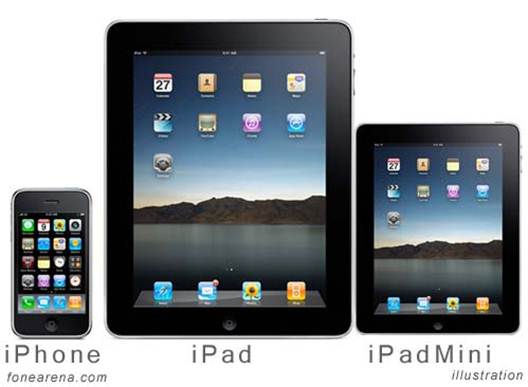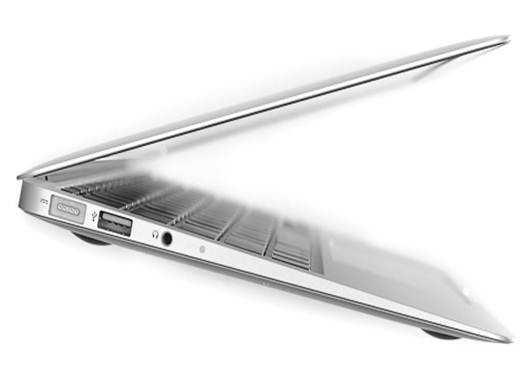So PC sales continue to fall off a cliff.
According to figures released earlier this month by Gartner, worldwide
shipments fell by 8.3%in the third quarter of 2012 compared to the same quarter
last year. In the US, the picture is even more gloomy, with shipments down
13.8%. much of the decline is in the consumer market, according to the firm.
‘A continuing slowdown in consumer PC
shipments played a big in the overall PC market decline,’ said Mikako Kitagawa,
principal analyst at Gartner. The one mitigating factor in the sharp decline is
that Windows 8 is looming on the horizon. ‘The third quarter was also a
transitional quarter before Microsoft’s Windows 8 operating system release, so
shipments were less vigorous as vendors and their channel partners liquidated
inventory,’ reckoned Kitagawa.

Will
the iPad mini change the shape of the market again?
That would explain some of the slowdown, as
consumers wait until the new Microsoft OS is released before buying their next
PC, thus avoiding the hassle of upgrading to it but it masks a deeper problem.
Consumer PC sales, both desktop and laptop, are in permanent decline. Even
Apple, which has so far bucked the trend, saw sales in the US drop by 6.1% in
that quarter. That smaller than average fall, however, was enough to push its
US market share up from 12.5% to 13.5%.
In Apple’s case, there were different
mitigating factors. Although it launched a new MacBook Pro and MacBook Air
range during the quarter, there was no new iMac and no new Mac mini. In Q3
2011, the MacBook Pro was less than six months old, and there were new Airs,
iMacs, and Mac minis. This time around, there were new Airs and Pros, but the
iMac and mini were a year old. With updated iMacs and Mac minis, it’s quite
possible that Mac sales would have shown positive growth for the quarter as
they have consistently worldwide in recent years, while the market as a whole
stagnated or fell.
The common perception is that tablets are
replacing laptops in consumers’ shopping baskets. Yet in reality only one
tablet, the iPad, is selling in significant numbers. So if the iPad is
cannibalising consumer PC sales, why isn’t it eating into sales of the Mac?
Perhaps there’s a ‘halo effect’ from the iPad and iPhone which is sheltering
Apple from the storm affecting the rest of the industry: come for the mobile
devices, stay for the Macs. Or perhaps it’s simply that Apple, unlike its
competitors, is making computers that consumers actually want to buy.
Gartner’s Ranjit Atwal had this
explanation: ‘The lack of appeal and innovation in PCs, combined with a
challenging economic environment, led the consumer spend to move to other
devices.’
David Daoud, research director for personal
computing at IDC, also cited the economy as a factor in declining sales, as
well as the upcoming US presidential election. ‘Nevertheless, as vendors line
up innovative new products and designs, consumers are likely to respond positively
during the tail end of 4Q12, and that means a potential return to positive
growth at the end of this year,’ said Daoud.
OF COURSE, IF the economic environment was the main cause of the sales decline,
we wouldn’t have seen the iPad take off so successfully in the same market.
That leaves the ‘lack of innovation’ argument. And it’s not hard to find
evidence to back it up.
Take HP’s Spectre One, for example. The
aluminium cased machine was derided (not least by us) for being little more
than a copy of the iMac with hints of MacBook Pro when it was launched in
September, even coming with a tile-style wireless keyboard strongly reminiscent
of a certain other. Perhaps Apple really is the only company innovating in the
consumer PC market.
The biggest hope for hardware innovation in
the PC market is surely Intel’s Ultrabook concept. Yet even that is a blatant
attempt to capitalize on the popularity of Apple’s MacBook Air. The Ultrabook,
which Intel defines as a machine that’s no more than 18mm thick (or 21mm if it
has a 14in or larger screen), has USB 3 or Thunderbolt ports and is, um,
‘responsive’, was supposed to re-ignite consumer interest in laptop PCs. But
manufacturers have struggled to meet the specification and keep the price to
Intel’s $1100 (£682) notional maximum.

The
biggest hope for hardware innovation in the PC market is surely Intel’s
Ultrabook concept
This led Gartner to comment that ‘any
upturn from ultramobiles failed to materialize, because they are not
competitively priced’. And there’s little evidence to support Daoud’s argument
that PC vendors are lining up ‘innovative new products and designs.’
Of the top five vendors in the US, Lenovo
was the only one to show a growth in sales in Q3. It managed this, according to
Gartner, by cutting prices and focusing on enterprise. But that focus may not
help it for long.
‘Professional PC shipments in the US began
slowing in the second quarter of this year, and they continued the trend in the
third quarter. The results indicate that the replacement peak may have passed
in the professional sector’, said Gartner’s Kitagawa.
And to complete the hat-trick, education
sales are struggling too. ‘The third quarter has historically been driven by
back to school sales, but US PC shipments did not increase, not even
sequentially, from the second quarter of 2012. Channels were conservative in
placing orders,’ wrote Kitagawa.
Windows 8, with its touchscreen interface
and specially designed apps, could give PC manufacturers a boost. But even that
comes with a warning. If makers are losing out to the iPad now, how will they
fare when consumers can replace their notebook with a Microsoft Surface tablet
running Windows 8? Will Windows 8 tablets kill the laptop market?
Forrester Research doesn’t think so. In
April 2012, it said: ‘Tablets [will] only partially cannibalise PCs. Eventually
tablets will slow laptop sales but increase sales of desktop PCs. That’s
because many people, especially information workers, will still need
conventional PCs for any intensely creative work at a desk that requires a
large display or significant processing power.’
That’s an optimistic outlook. In
particular, the idea that tablets will increase sales of desktop PCs seems
fanciful. Yes, a significant number of professionals need a large screen, but
that’s more likely to be connected to a laptop than a desktop. The underlying
point in Forrester’s assertion seems to be a suspicion that tablets aren’t
capable of doing ‘real’ work. For many tasks that’s true; for many others, it’s
not. There are countless examples of tablets replacing laptops for ‘real’ work,
which is sometimes easier on a tablet than a PC, a point not lost on Intel CTO
Justin Rattner.
‘You begin to see people segregating their workloads.
Things like mail and messaging seem to be much easier on phones and tablets,
and not so easy on Pcs,’ he told Computer-world. So what can PC manufacturers
do to compete? ‘I think it’s incumbent on Intel and the PC industry in general
to deliver a competitive platform capability. If you can’t deliver a comparable
or better experience on a PC, the PC isn’t going to win,’ said Rattner.
That’s a huge challenge, but one which Pc
manufacturers must meet if they’re to prosper – especially with Apple about to
hit them with yet another tablet rival at a price to turn the heads of even
more users.